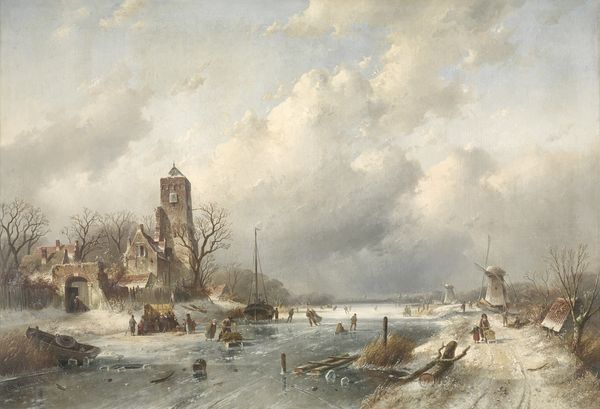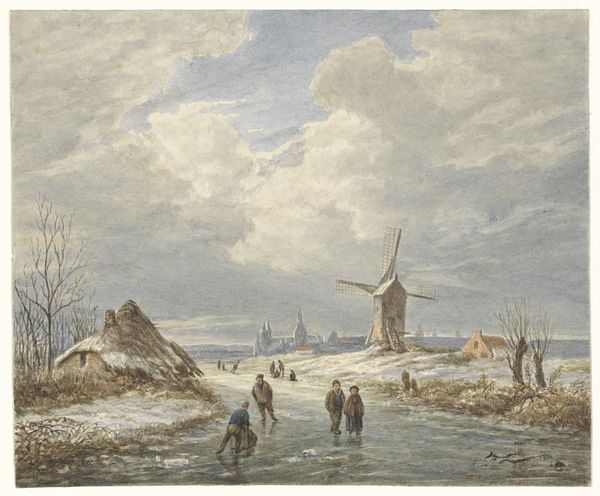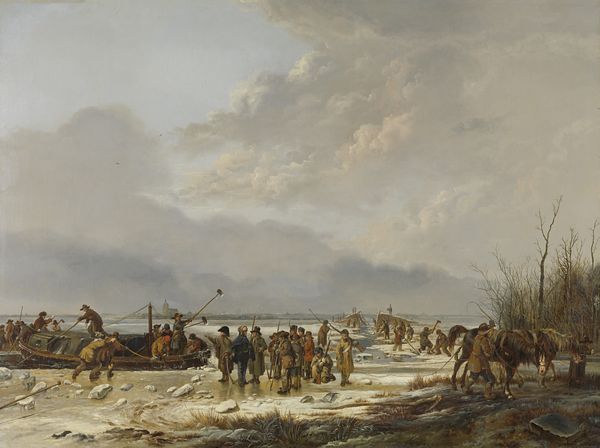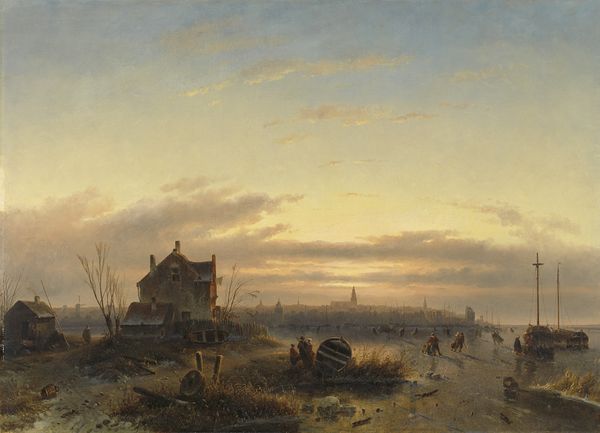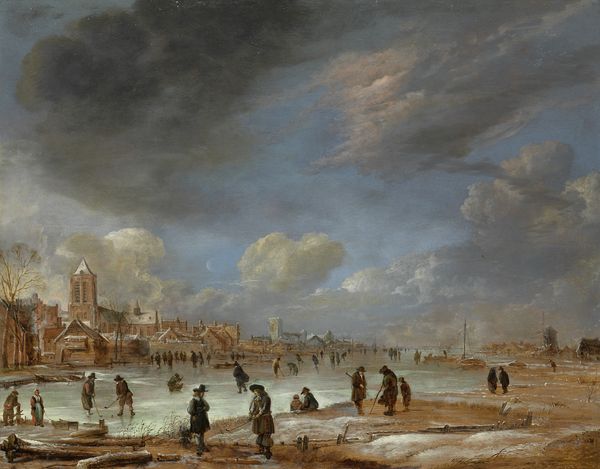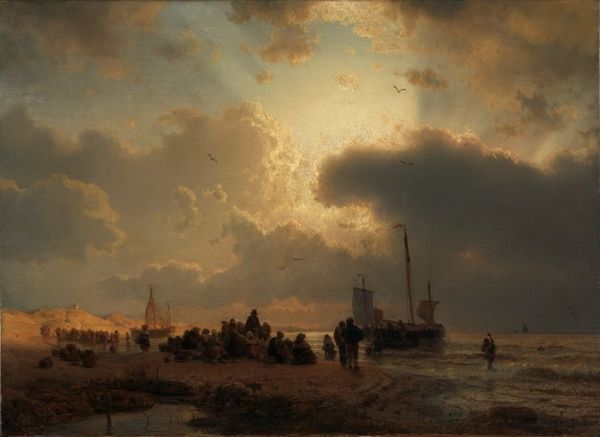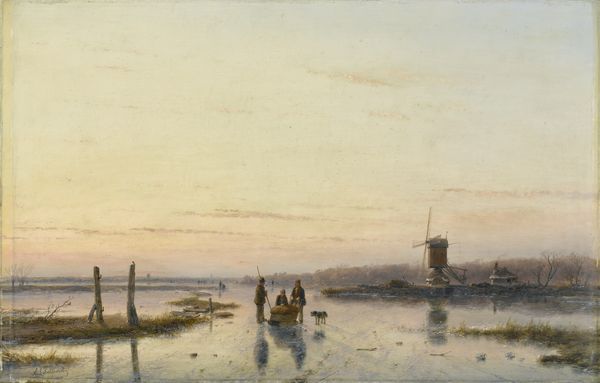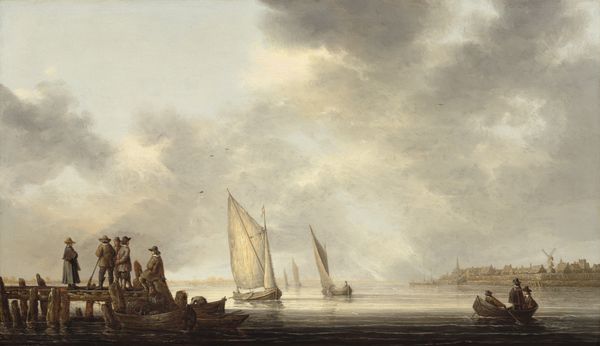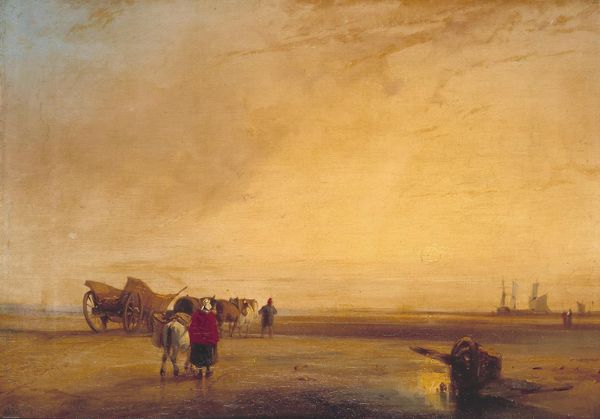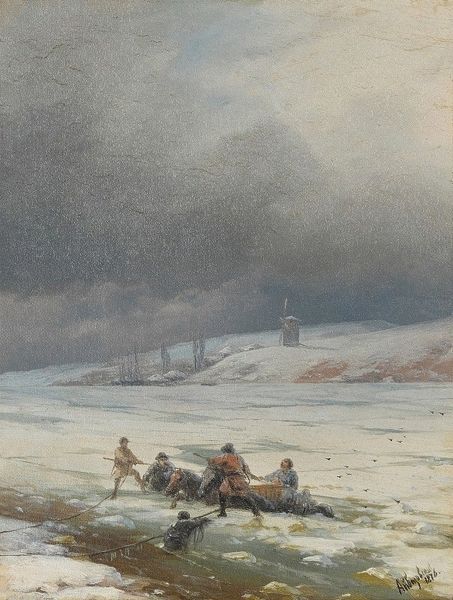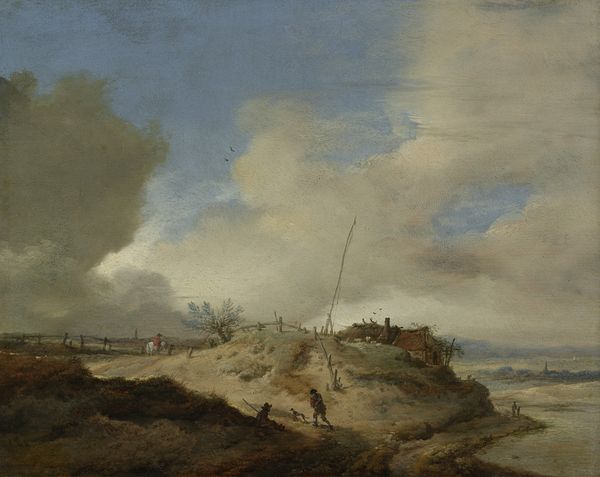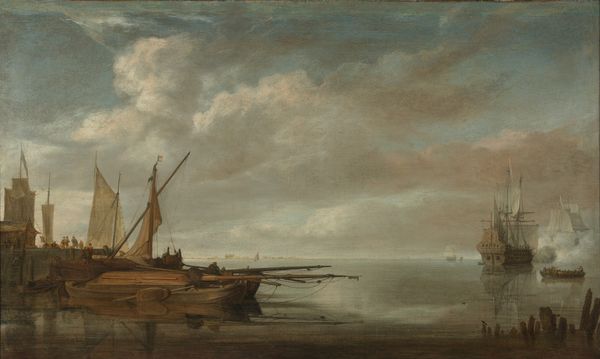
painting, oil-paint
#
painting
#
oil-paint
#
landscape
#
painting painterly
#
genre-painting
#
charcoal
#
realism
Dimensions: 58 cm (height) x 81.5 cm (width) (Netto)
Editor: So, this is "A Winter Day on the Elbe" by Georg Emil Libert, painted sometime between 1835 and 1873, using oil on canvas. It’s quite striking – the muted colors really set a mood. I’m curious, looking at this, what stands out to you? Curator: For me, it's the relationship between the materials represented and the materials used. The artist uses oil paint to depict a specific scene – a winter day on the Elbe – but let's consider the social context. Who had access to oil paints, and how did this influence the subject matter and style of the work? The choice of a landscape as a subject—how does it relate to land ownership and social hierarchies? Editor: That’s an interesting perspective. I was just focusing on the pretty picture! But you’re right, the oil paint itself is a commodity. So how does Libert’s artistic labour connect with, say, the labour of the people he’s portraying on the ice? Curator: Precisely. Think about the windmill. What does it signify? The grinding of grain, the provision of sustenance, or a signifier of industrial processes, which impacted landscape and lives? How is the representation of nature here affected by industrial modes of production that allowed for both leisure and this artistic production in the first place? What’s the economic reality for those enjoying the ‘leisure’ of a winter’s skate? Editor: It’s made me consider how something as simple as a landscape painting is deeply intertwined with broader economic and social factors. It moves past a straightforward nature scene to raise questions about resource consumption. Curator: Exactly! By interrogating the materiality of the work, we gain a deeper understanding of its social implications. Hopefully we never look at another winter scene the same way!
Comments
No comments
Be the first to comment and join the conversation on the ultimate creative platform.
